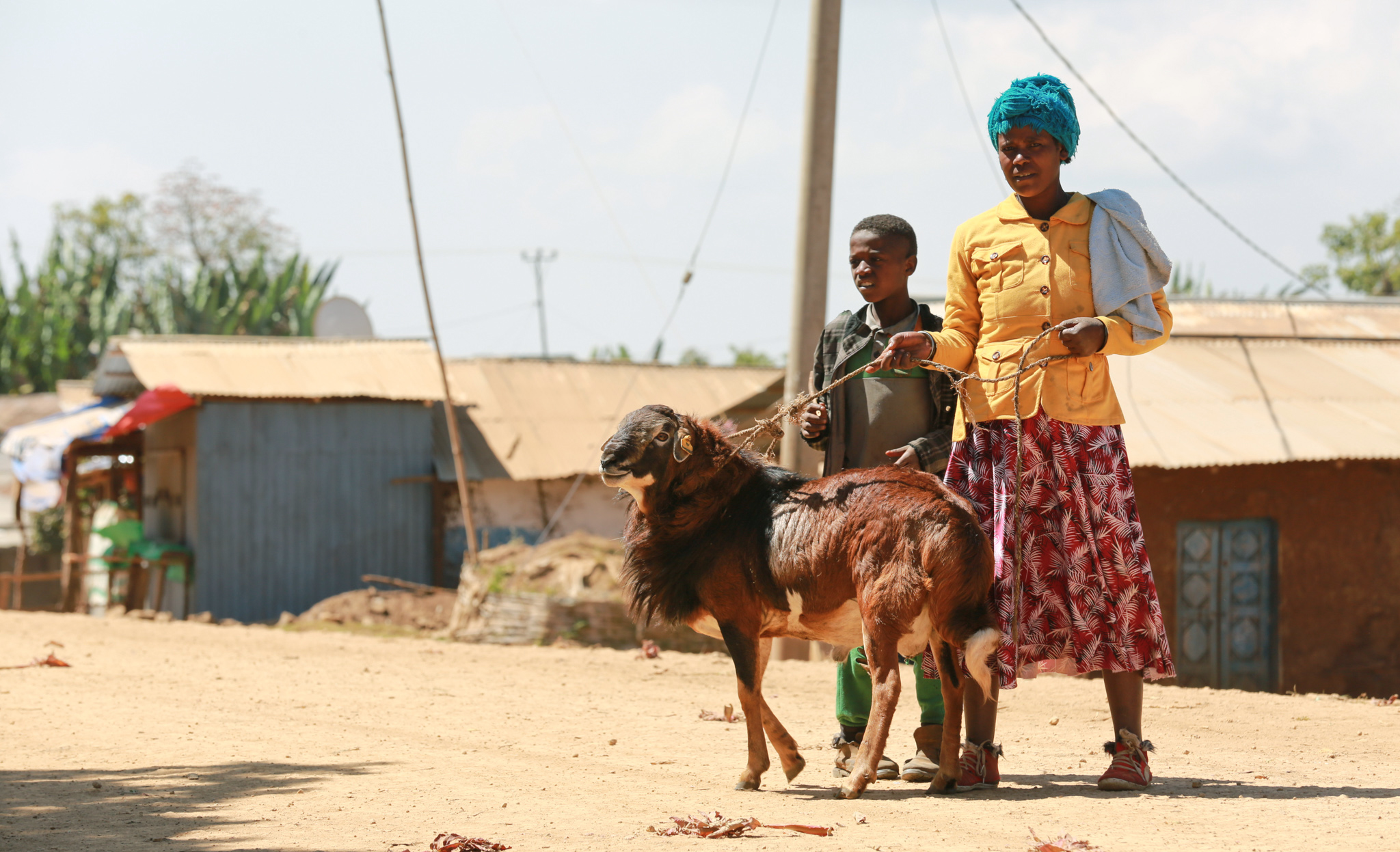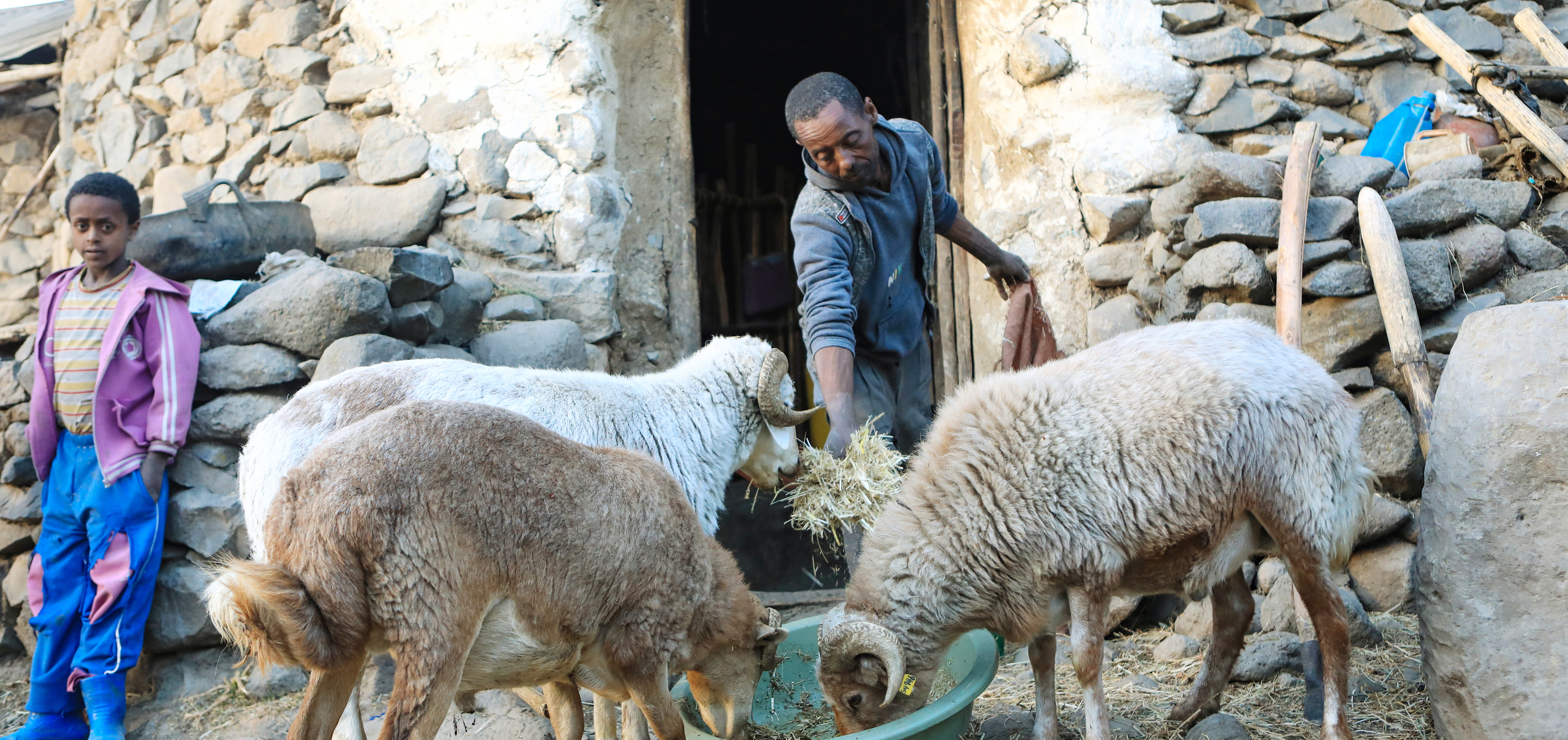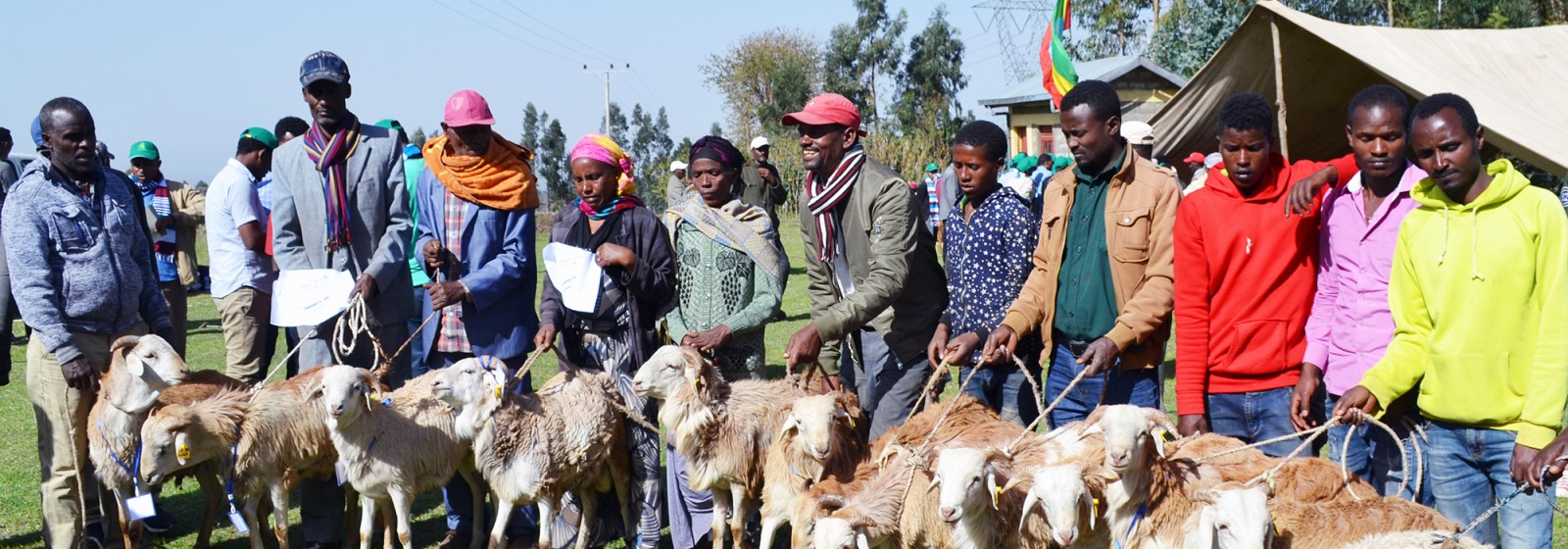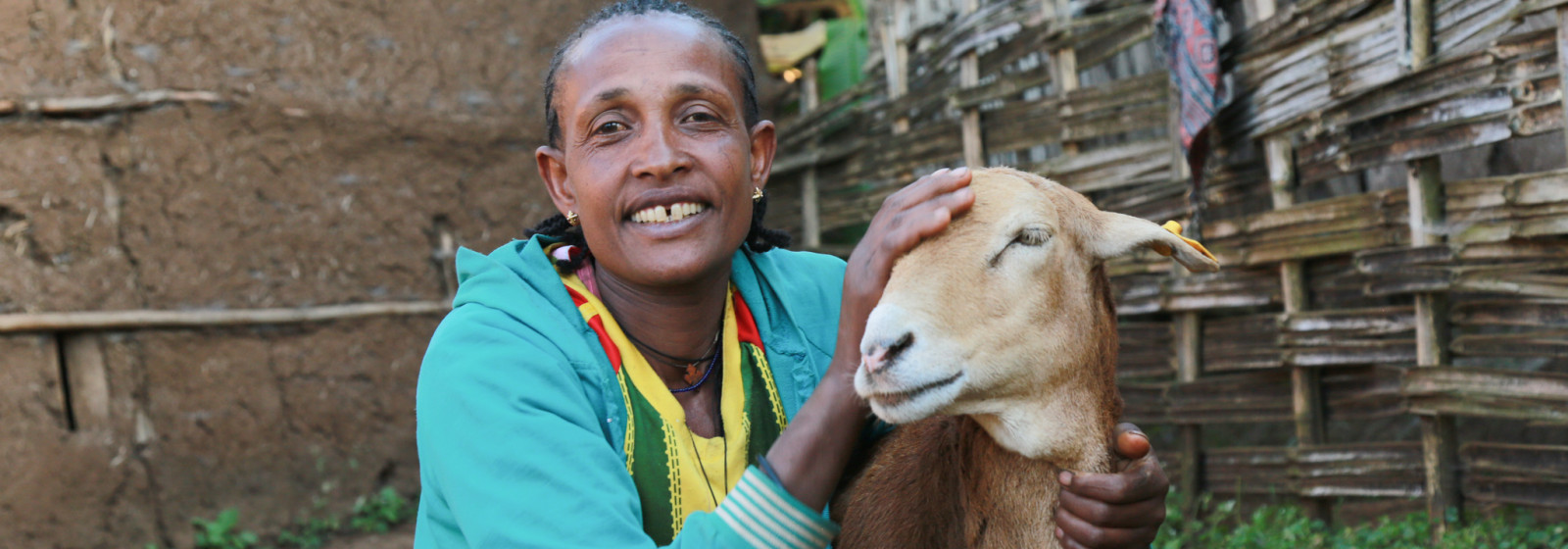
A novel approach to sheep and goat breeding that puts farmers at the forefront has seen major success in Ethiopia, with farmer incomes increasing by 20%, profits being invested back into the community, and a re-think of the country’s national livestock breeding policy.
“Taking a community-based approach to livestock breeding has not only improved thousands of lives in Ethiopia, but it has given farmers the knowledge, skills and support they need to continue making improvements long into the future,” says Aynalem Haile, a scientist specializing in small ruminant breeding with the International Center for Agricultural Research in the Dry Areas (ICARDA).
Despite a growing global demand for meat, milk and other livestock products, smallholder farmers in Ethiopia have struggled to increase the production of their animals.
“One way to increase productivity is through animal breeding, which is based on genetics. With good information about the animal’s genetics, you can decide to breed the animals that have better performance for the traits you want, for example the fast growing animals or the best milk producers. This will help to ensure these attributes are passed to the next generation,” Haile says.
In an attempt to increase animal productivity, the Ethiopian government has spent the past few decades replicating a centralized breeding program approach that has been successful in a number of developed countries. Called a ‘nucleus scheme’, it involves keeping hundreds of animals in a government-managed centralized facility for selection and breeding, with the best animals then distributed to farmers.
However, this approach has its critics - the extensive infrastructure required is expensive, it’s led to importation of exotic breeds that struggle to adapt to local conditions, and it has disregarded the needs and interests of farmers.
“As a result, the nucleus scheme has practically failed in most African countries,” Haile says.

Centralized to community
Ten years ago, a more participatory approach started to gain global interest. Called ‘community-based breeding’, it combines farmer training to improve selection methods, pooling community flocks to create a larger gene pool from which breeding animals can be selected, scientific support to provide farmers with information on different breeding options, and data collection to monitor how well individual animals perform.
In 2009, this approach was brought to Ethiopia by ICARDA in partnership with the International Livestock Research Institute (ILRI), Austria’s University of Natural Resources and Life Sciences (BOKU), and the Ethiopian National Agricultural Research System.
“Unlike the nucleus schemes or importation of exotic breeds, this approach is inherently sustainable as it supports local-level decision making, focuses on locally adapted indigenous breeds, and takes into account the constraints that smallholder farmers face,” Haile says.
Haile and a team of scientists, students and national extension agents started by working with 500 households in four communities. First they studied how farmers were managing breeding – how many male animals the communities had and how they were used communally. They identified a major problem - there were hardly any male animals.
“This has huge implications, as you would expect, because most of the females were not pregnant. We asked why there were not enough males, and the main reason for that was because of financial problems - farmers were selling their fastest growing animals and the useless ones would be the ones left for breeding,” Haile says.
“When we started working with them, some of the communities had never seen a ram over two years old.”

In order to tackle this issue, the scientists helped the communities to formalize their traditional communal arrangement into a cooperative structure, and provided revolving funds for communal use.
“This helped them buy rams that could be used for breeding. It also meant if an individual farmer needed money, they could just sell their animal to the cooperative so the best breeding animals would stay in the community,” Haile says.
“We also provided support with disease management and seeds to grow good feed. While our project is not about feeding or health, we recognized that an integrated approach was necessary to ensure farmers would engage in a longer term breeding program.”
Taking these steps was really important, Haile says, because many of the farmers were initially reluctant to participate.
“The first year was really difficult. But as most of their animals became pregnant and a lot of lambs were born, they started to believe in this approach,” he says.
Once a healthy breeding stock had been established, the next step was to help communities define their breeding objectives.
“We developed a few participatory tools to assist, but we made sure that the farmers themselves were the ones to decide on these objectives,” he says.
Once the objectives had been defined, researchers helped the community develop a breeding structure - addressing how males and female livestock should be managed, how to use rams communally and the process for selecting animals for breeding.
“At the same time, we were also recruiting and training local members of the community to act as enumerators – these are high school graduates or diploma graduates who do day-to-day data collection,” Haile says.
This data was then used by the scientists to estimate ‘breeding values’, that is, which animals should mate in order to best achieve the breeding objectives set by the community.
“We were absolutely transparent and consulted with them on all decisions. It’s not our decision, we were just catalysts trying to provide them with scientific evidence so they could make informed decisions,” Haile says.

From safety net to self-sufficient
As the rams began to tip the scales at 70kg, word spread to neighbouring communities. Ten years on, the community-based breeding program has reached 3200 households in 40 villages at a fraction of the cost of introducing exotic animals or nucleus schemes.
“We’ve seen an increase in the birth and growth rate of lambs, reduced mortality and a higher price fetched at markets compared to sheep and goats from farmers who are not members of breeding groups,” Haile says.
One of the most important achievements, Haile says, is that all of the farmers they work with can now identify a meat animal from a breeding animal.
“This has been fundamental to raising animal productivity in a way that will continue well into the future,” he says.
In three communities – Bonga, Horro and Menz – the approach has generated a 20 percent average increase in farmer incomes.
“This means that many households are now financially self-sufficient and don’t need to rely on government safety net programs,” Haile says.
The program has also supported farmers to establish 35 formal breeders’ cooperatives, which have enabled the groups to build capital from investments. A cooperative in Bonga, for instance, now has capital of Birr 3.34 million (US$96,500), which it has put towards community projects such as building a community hall and constructing roads.
“A well-established cooperative, where there are structures in place to help people work together towards a common goal, will be helpful as an entry point for any intervention,” Haile says.
The program has also trained 50 masters and 15 PhD students, who have become advocates for the program within their universities and organisations.

Government’s strategy of choice
The growing popularity and success of the approach, as well as its focus on including government extension and research workers in the program design and delivery, has attracted significant government interest. Community-based breeding sites have been visited by one of Ethiopia’s former prime ministers as well as a number of high-ranking ministers.
“People believe evidence. Going to the site and listening to the farmers in the cooperatives who showed them evidence of genetic gain, technical feasibility and socioeconomic benefits meant we were able to convince politicians that community-based breeding is a winning approach,” Haile says.
As a result, community-based breeding has become the Ethiopia government’s strategy of choice for sheep and goats. It’s been incorporated into the country’s livestock master plan, and has received a US$560,000 investment from the World Bank and investment from regional government authorities to upscale the approach across the country.
Haile and his team have documented their learnings and developed guidelines to assist others with setting up their own community-based breeding programs.
“Community breeding is now spreading across Africa – we have partners in 10 countries that have begun to replicate our approach and are generating encouraging results,” Haile says.
“My hope is that every country considers adopting this strategy so that community breeding cooperatives across the world can become self-sustaining and thriving private enterprises that create opportunities for all.”

